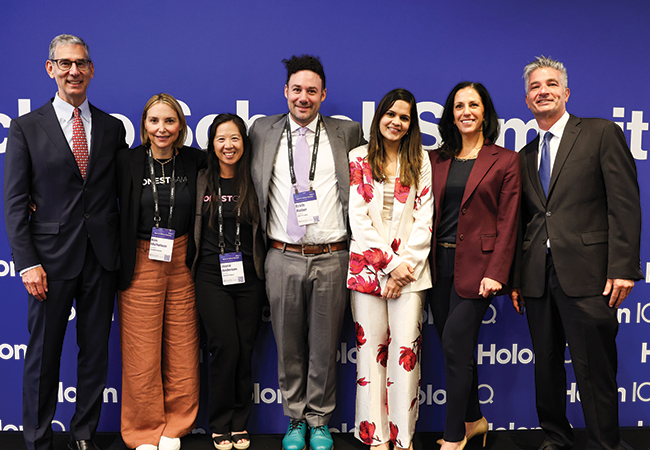“Will speech therapy actually help my child stop stuttering, or are we wasting our time?” It’s the question every parent asks, whether out loud or silently. The answer, backed by decades of research and modern innovation, is encouraging: Yes, speech therapy does help with stuttering—but not always in the way parents initially expect.
Modern research shows that the majority of children who receive early intervention show significant improvement in their communication abilities. However, “improvement” doesn’t always mean complete fluency. Sometimes it means confident communication despite stuttering. Sometimes it means near-complete fluency. And increasingly in 2025, it means combining traditional therapy with digital tools for outcomes that weren’t possible even five years ago.
The Evidence Is Clear: Speech Therapy Works
Let’s start with what research actually tells us about whether speech therapy can help stuttering. The evidence from multiple studies paints an optimistic picture, especially for early intervention.
A comprehensive review by Baxter et al. (2015) published in the International Journal of Language & Communication Disorders examined multiple stuttering interventions and found consistent evidence that speech therapy produces positive outcomes for children who stutter. The review noted that while different approaches showed varying effect sizes, the overall trend strongly supported intervention effectiveness.
Similarly, Nye et al. (2013) conducted a systematic review in the Journal of Communication Disorders analyzing behavioral interventions for stuttering. They found that participants receiving therapy showed significant improvements compared to control groups, with effects maintained at follow-up assessments.
When Professional Help Makes the Biggest Difference
Timing matters tremendously in stuttering therapy effectiveness. Understanding when to seek help can dramatically impact outcomes.
The Early Intervention Advantage
The seminal work of Yairi & Ambrose (2005) in their book Early Childhood Stuttering established that early intervention is crucial. Their research, based on the Illinois Stuttering Project, showed that:
- Natural recovery rates are highest in the first 12–18 months after onset.
- Children who don’t recover naturally benefit most from early intervention.
- Waiting too long may allow stuttering patterns to become entrenched.
Recent neuroimaging research by Chang et al. (2015) published in Brain provides biological support for early intervention. They found that children who stutter show differences in white matter development, and that younger brains show greater plasticity for establishing new neural pathways through therapy.
Clear Signs It’s Time for Professional Evaluation
Based on clinical guidelines from the American Speech-Language-Hearing Association (ASHA) and research consensus, seek assessment when:
- Stuttering persists beyond 6 months
- Your child shows physical tension or struggle when speaking
- They express frustration or awareness about their speech
- Family history of persistent stuttering exists
- Stuttering frequency exceeds 10% of syllables spoken
- Your child begins avoiding words or speaking situations
Guitar (2014) in his comprehensive textbook Stuttering: An Integrated Approach to Its Nature and Treatment emphasizes that evaluation doesn’t automatically mean years of therapy—sometimes parent education and environmental modifications are sufficient.
What Modern Speech Therapy Actually Looks Like
Today’s stuttering therapy incorporates evidence-based approaches that have evolved significantly from past decades.
Core Therapy Approaches in 2025
Modern speech-language pathologists use approaches validated by research:
- The Lidcombe Program (for preschoolers): Developed in Australia and validated worldwide, this parent-implemented program uses positive reinforcement and gentle correction. Multiple studies including Jones et al. (2005) in BMJ have demonstrated its effectiveness.
- The Camperdown Program (for adolescents/adults): O’Brian et al. (2003) showed this prolonged speech approach helps older individuals achieve fluency while maintaining naturalness.
- RESTART-DCM (Demands and Capacities Model): de Sonneville-Koedoot et al. (2015) demonstrated this approach’s effectiveness in reducing stuttering while addressing underlying factors.
Session Structure and Frequency
The optimal therapy intensity has been studied extensively. Blomgren (2013) in Seminars in Speech and Language reviewed intensive treatment programs and found that concentrated practice (daily sessions over 2–3 weeks) often produces faster initial gains than weekly therapy, though both approaches can be effective with proper follow-up.
The 2025 Revolution: How Digital Tools Amplify Results
While specific research on stuttering apps is still emerging, related fields provide encouraging evidence.
Research on technology-enhanced speech therapy more broadly shows promise. Furlong et al. (2018) in the International Journal of Speech-Language Pathology found that telepractice for speech disorders can be as effective as in-person therapy when properly implemented.
A systematic review by Theodoros (2012) in the International Journal of Telerehabilitation demonstrated that technology-delivered speech therapy produces comparable outcomes to traditional methods across various speech disorders.
How Modern Families Use Technology
- Weekly sessions with an SLP (in-person or teletherapy)
- Daily home practice supplemented by digital tools
- Progress monitoring through data collection
- Regular communication between parents and therapists
While we await more specific research on stuttering apps, the principles of motor learning suggest that increased practice frequency (enabled by apps) should enhance outcomes—a hypothesis supported by general speech therapy research.
What Leading Experts Say About Modern Stuttering Therapy
Prominent researchers and clinicians provide valuable perspective on current treatment approaches.
Dr. Gonçalo Leal (Speechcare / iStutter) underscores the multidimensional nature of stuttering and the need for personalized intervention that targets speech behaviors alongside attitudes and impact.
Dr. Susan (Suzi) Meyers Fosnot, past executive member of the American Board of Stuttering, Cluttering, and Fluency Disorders, highlights structured, evidence-aligned therapy paired with high-frequency, motivating home practice and family engagement.
Dr. Soo-Eun Chang (University of Michigan) integrates multimodal neuroimaging to show stuttering’s neurodevelopmental underpinnings in timing and speech-motor networks, advocating early identification and intervention to leverage neuroplasticity.
The Neurodiversity Perspective
Modern therapy increasingly recognizes stuttering as a form of communication diversity. Constantino et al. (2017) in the Journal of Fluency Disorders explored how self-help and acceptance can complement traditional therapy, leading to improved quality of life regardless of fluency levels.
Setting Realistic Expectations for Your Journey
Progress Timelines
- Initial assessment and goal-setting: 2–3 sessions
- Learning phase: 4–6 weeks with minimal visible change
- Skill acquisition: Months 2–3 showing technique development
- Generalization: Months 4–6 transferring skills to daily life
- Maintenance: Ongoing practice to sustain gains
Defining Success Beyond Fluency
- Effective, confident communication across settings (classroom, peers, family)
- Reduced adverse impact of stuttering on daily life
- Healthier communication attitudes and self-efficacy
- Fluency improvements that serve functional goals
Kristin Chmela (former president, American Board of Stuttering, Cluttering, and Fluency Disorders) promotes a “communication over fluency” approach—focusing therapy around evolving communicative competence and empowering speakers to communicate freely and meaningfully.
The Path Forward: Evidence-Based Treatment Works
- Early intervention improves outcomes
- Various therapeutic approaches demonstrate effectiveness
- Parent involvement enhances success
- Long-term gains are achievable
- Technology shows promise for enhancing traditional therapy
The question isn’t whether therapy works—decades of research prove it does. The question is how to maximize its effectiveness for your unique child.
Start with professional evaluation by a certified speech-language pathologist. Embrace evidence-based techniques. Maintain realistic expectations. Focus on progress, not perfection. And remember: every child’s journey differs, but with proper support, every child can become a more confident communicator.
Key References
- Baxter, S. et al. (2015). The state of the art in non-pharmacological interventions for developmental stuttering. Int. J. of Language & Communication Disorders, 50(5), 676–718.
- Chang, S. E. et al. (2015). White matter neuroanatomical differences in young children who stutter. Brain, 138(3), 694–711.
- Chmela, K., & Johnson, L. (2018). How can we overcome the challenges of providing school-based fluency services? Seminars in Speech and Language, 39(4), 371–381.
- De Sonneville-Koedoot, C. et al. (2015). Direct versus indirect treatment for preschool children who stutter. PLoS One, 10(7), e0133758.
- Guitar, B. (2014). Stuttering: An Integrated Approach to Its Nature and Treatment. Lippincott Williams & Wilkins.
- Jones, M. et al. (2005). Randomised controlled trial of the Lidcombe programme. BMJ, 331(7518), 659.
- Yairi, E., & Ambrose, N. (2005). Early Childhood Stuttering: For Clinicians by Clinicians. Pro-Ed.
- Yaruss, J. S., & Quesal, R. W. (2006). Overall Assessment of the Speaker’s Experience of Stuttering (OASES). J. of Fluency Disorders, 31(2), 90–115.














